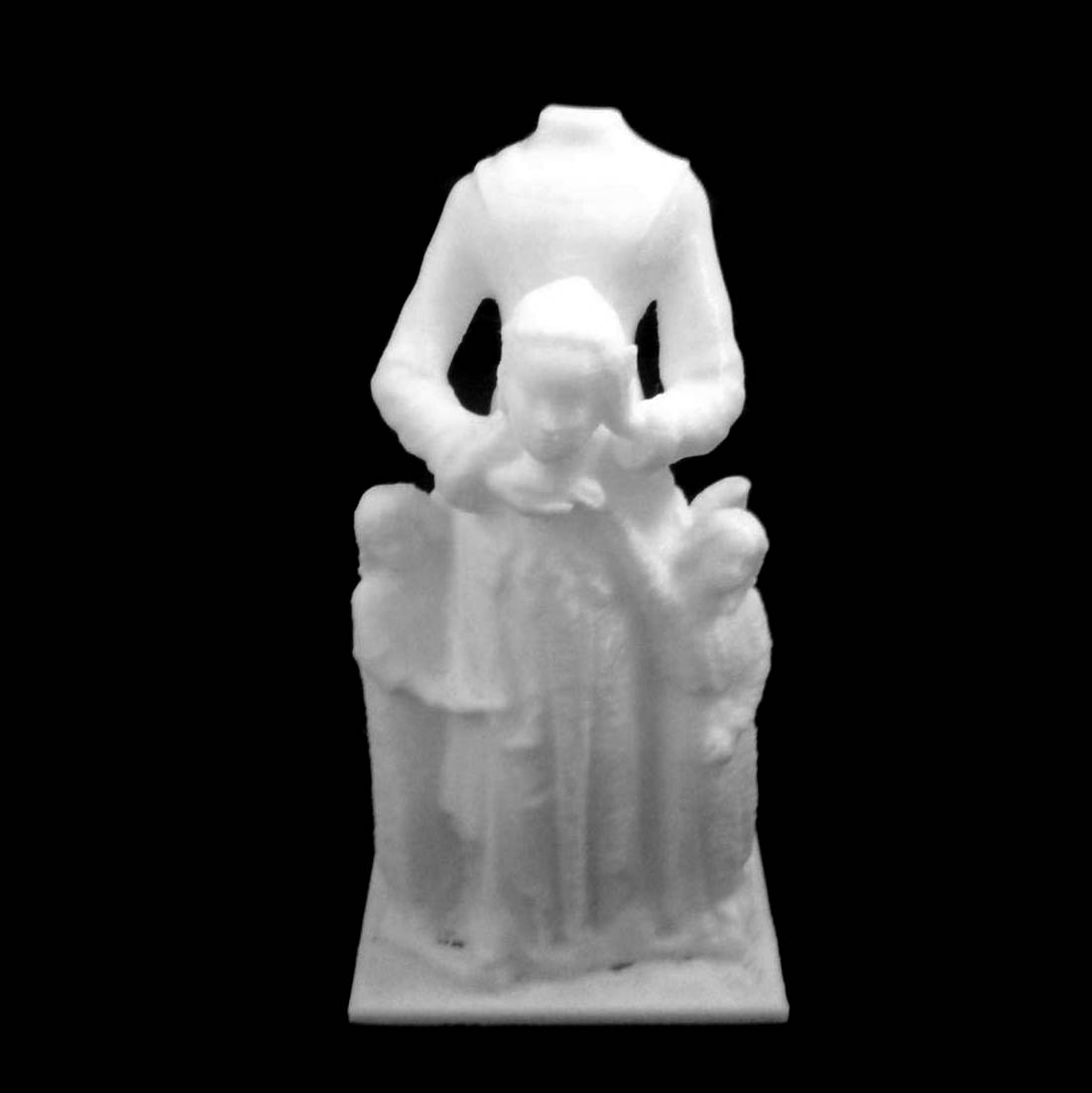
Saint Valerie holding her head in her hands at The Louvre, Paris
myminifactory
This sculpture honors a Roman period martyr named Saint Valerie who boldly refused to marry a Pagan and was subsequently beheaded. Immediately after her execution, she carried her head to the bishop who welcomed her as a martyr. The most striking similarities with the legendary figure of St. Valerie are those that showcase the distinctive trait of cephalophory. France is rich in these examples, including its capital's patron saint, Denis. The severed head that continues to preach is a powerful declaration of autonomy or perhaps theonomy in the face of persecution, as the bishop Denis persists in his work of prophecy and preaching. In St Valerie's case, the severed head is returned to where it belongs, the deceased person's bishop, pastor, and confessor. In both cases, there is a continuity in the relationship with the Church beyond death. The more basic theme of decapitation broadens the field of comparison significantly. An obvious source of parallels is the deuterocanonical book of Judith, where we find a young woman pledging herself to virginity after seducing and beheading a tyrannical enemy of the faith, and presenting his head to her countrymen. The myths are differently configured, but there appear to be similar underlying concerns in which the faith community is threatened by both persecution and exogamy. The most obvious parallels are perhaps with the Biblical and post-Biblical narrative of John the Baptist. Here we find not only a beheading, but a problematic marriage (with suggestions of incest rather than exogamy), defiant denunciation of tyranny, a centrally-important young woman, and presentation of the head to a third party. In this case, however, the threat to the faith community seems to come from within. The thematic parallel was strong enough for the builders to support St Valerie's shrine in St Michel des Lions with a fine stained glass window depicting John the Baptist. A cephalaphore is a saint who is generally depicted carrying their own head; in art, this typically signified that the subject had been martyred by beheading. This sculptural style was highly popular in France. Managing the halo in this circumstance presents a unique challenge for the artist. Some artists place the halo where the head used to be, while others have the saint carry the halo along with the head. This object is part of "Scan The World". Scan the World is a non-profit initiative introduced by MyMiniFactory, which aims to create a digital archive of fully 3D printable sculptures, artworks, and landmarks from around the globe for the public to access free of charge. Scan the World is an open-source community effort; if you have interesting items nearby and would like to contribute, email stw@myminifactory.com to learn how you can help.
With this file you will be able to print Saint Valerie holding her head in her hands at The Louvre, Paris with your 3D printer. Click on the button and save the file on your computer to work, edit or customize your design. You can also find more 3D designs for printers on Saint Valerie holding her head in her hands at The Louvre, Paris.
